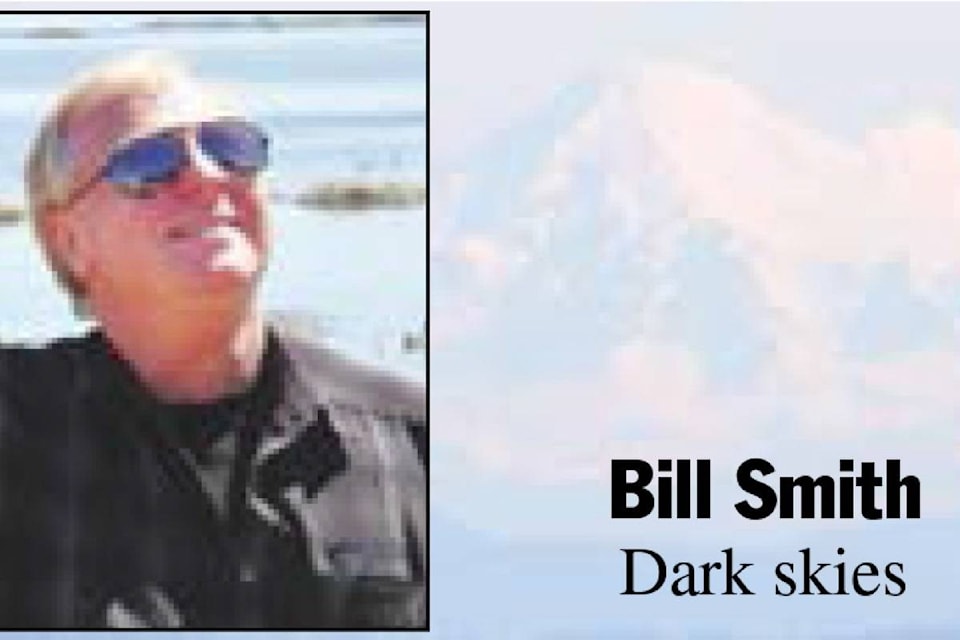What’s up for November? The moon passes three pretty star clusters, a close conjunction of Venus and Jupiter, sparse meteor showers and one comet.
Your binoculars will come in handy this month, to view the moon, star clusters and the close pairing of Venus and Jupiter.
You can’t miss bright Venus in the predawn sky. This month Venus pairs up with Jupiter on the morning of Nov. 13, as they did in 2015 and 2016 when the two planets appeared a little closer than this year.
You’ll have to be looking very low on the east-southeast horizon over Seattle early in the morning around 7 a.m., about 45 minutes before sunrise, but protect your eyes. Don’t aim your binoculars directly at the sun and don’t look at the approaching sunrise with your unaided eyes or binoculars or telescopes.
There are three meteor showers this month, but none will present high numbers of meteors at their peak.
The Leonids peak on a moonless Nov. 17. Expect no more than 10 meteors an hour around 3 a.m., the height of the shower.
The northern and southern sub-branches of the Taurid meteor shower offer sparse counts of about five meteors per hour, but slow, bright meteors are common.
The nearby November Orionids peak on Nov. 28. In contrast to the nearby Taurids, the Orionids are swift, but don’t expect more than three meteors per hour.
The moon glides by three beautiful star clusters in the morning sky this month and a pair of binoculars will allow you to see the individual stars in the clusters.
Aim your binocs at the Pleiades and moon on Nov. 5, Messier or M-35 cluster and the moon on Nov. 7 and the Beehive cluster and the moon on Nov. 10.
Meanwhile, at dusk, catch Saturn as it dips closer to the western horizon, over the Sooke Hills this month, and pairs up with Mercury on Nov. 24 through 28.
Comet ASASSN1, short for All-Sky Automated Survey for Supernovae, discovered only in July, came close to the sun in October, and should still be a binocular-friendly magnitude 7-8 greenish object in November. Use Polaris, the North Star as a guide. Look in the East to Northeast sky over Vancouver, in the late evening.
Hope you will explore this link timeanddate.com/astronomy/night/canada/victoria
which shows you the time each planet is Visible in the Night Sky in Oak bay, British Columbia, Canada.
Remember all planets walk from east to west during the night, just the same as the sun and moon, moving along an arc in the sky that we call “The Salish Walk of the Planets” - or the “ecliptic”.
All the rest of the stars and galaxies rotate around the North Star over #YYJ, the Victoria Airport.
As a last topic I’d like to encourage you to re-explore the Smartphone apps. Now in 2017 we have many great apps which instantly bring the night sky alive.
Check out this video, “Tom’s Guide” to see 15 of the best “space watching apps”
So if you have internet access with your phone from a place like Cattle Point Dark Sky Star Park, there is no better experience than exploring the night sky on a calm clear evening.
Try comparing the night sky (after your eyes have adjusted to the darkness) with the “visualization” of the stars, galaxies and constellations displayed on your Smartphone. For example you see a bright object over Vancouver then you point your phone towards it and the constellation image is named and re-displayed for you to compare with the wonder of the “real” sky.
It is brilliant to have this instant expert helping you name each object in the sky.
Should you wish to meet the RASCals of Cattle Point visit their page at facebook.com/groups/VictoriaRASCals/
Dark Skies to all friends of Cattle Point Star Park.
Summary by Bill Smith is from the transcript of “What’s Up in November 2017” by NASA announcer and astronomer Jane Houston Jones with specific permission for localization to Cattle Point Dark Sky Urban Star Park and the Oak Bay News.
You can subscribe to her weekly blog at solarsystem.nasa.gov/news/category/10things
